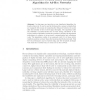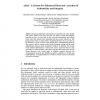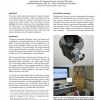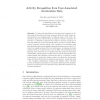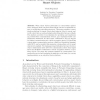PERVASIVE
2004
Springer
14 years 4 months ago
2004
Springer
Radio Frequency Identification (RFID) has recently received a lot of attention as an augmentation technology in the ubiquitous computing domain. In this paper we present various s...
PERVASIVE
2004
Springer
14 years 4 months ago
2004
Springer
Abstract. This paper describesa method for establishing ad hoc and infrastructuremode wireless network connections based on physical proximity. Users can easily establish secure wi...
PERVASIVE
2004
Springer
14 years 4 months ago
2004
Springer
In this paper we introduce a new distributed algorithm for location discovery. It can be used in wireless ad-hoc sensor networks that are equipped with means of measuring the dista...
PERVASIVE
2004
Springer
14 years 4 months ago
2004
Springer
We propose a novel solution for securing wireless ad-hoc networks. Our goal is to provide secure key exchange in the presence of device failures and denial-of-service attacks. The ...
PERVASIVE
2004
Springer
14 years 4 months ago
2004
Springer
Ensuring authenticity and integrity are important tasks when dealing with goods. While in the past seal wax was used to ensure the integrity, electronic devices are now able to tak...
PERVASIVE
2004
Springer
14 years 4 months ago
2004
Springer
In this paper, we propose a new framework for ubiquitous computing by rule-based, event-driven I/O (input/output) control devices. Our approach is flexible and autonomous because ...
PERVASIVE
2004
Springer
14 years 4 months ago
2004
Springer
We present a lightweight search function for physical objects in instrumented environments. Objects are tagged with optical markers which are scanned by a steerable camera and pro...
PERVASIVE
2004
Springer
14 years 4 months ago
2004
Springer
In this work, a system for recognizing activities in the home setting using a set of small and simple state-change sensors is introduced. The sensors are designed to be “tape on ...
PERVASIVE
2004
Springer
14 years 4 months ago
2004
Springer
Abstract. In this work, algorithms are developed and evaluated to detect physical activities from data acquired using five small biaxial accelerometers worn simultaneously on di�...
PERVASIVE
2004
Springer
14 years 4 months ago
2004
Springer
Abstract. When smart objects participate in context-aware applications, changes in their real-world environment can have a significant impact on underlying networking structures. ...

